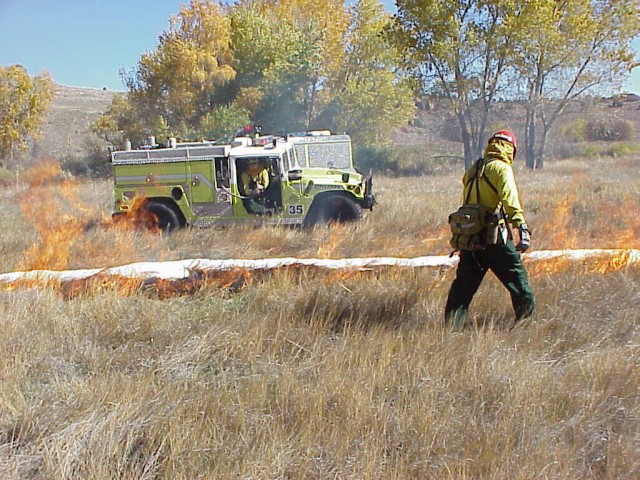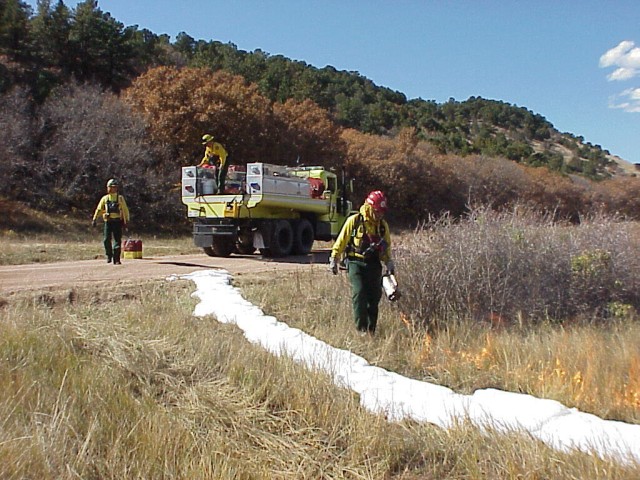FORT CARSON, Colo.-Fire is a powerful force in nature, and is an essential part of many ecosystems - it is also a very real threat to manmade structures and human life.
At Fort Carson and PiAfA+-on Canyon Maneuver Site fire is also regarded as an effective and necessary tool against the very danger it represents, as well as aid to land managers protecting and enhancing natural resources.
A policy of strict fire suppression has not proven to be cost-effective and ignores the benefits of wildland fires from natural causes. Naturally occurring fires serve to control insects, diseases and weeds, while improving habitat by maintaining and improving the quality of forage for wildlife. Fires caused by military training, however, can occur too often and at the wrong time, disrupting the natural cycle. This causes damage to critical resources, and often poses safety concerns.
To manage these complex issues and maintain a more natural ecological balance in the training areas, the Directorate of Public Works Wildland Fire Team works with the Directorate of Emergency Services Fire Department to develop an annual prescribed fire burn plan that encompasses Fort Carson and PCMS. This collaborative effort facilitates the best training opportunities possible for Soldiers while reducing the risk of unplanned fires, and extinguishing unplanned fires as quickly as possible.
The burn plan designates areas that will be treated with fire and under what conditions the burn will take place, taking into account weather conditions and fire fuel (vegetation) moisture. Prescribed burning, in some cases, helps to reduce invasive weeds, forest disease and insect pests - problems that contribute to the build-up of fuels for wildland fires. These burns also result in lowering costs for fighting wildland fires that do occur, safer conditions for firefighters due to less intense or difficult to access fires and aids in minimizing the possibility of fires moving off the installation.
Prescribed burning generally takes place in the fall, winter and early spring seasons, under well-controlled conditions and during periods of low to medium fire danger.
A key component of the prescribed fire program is smoke management planning, which is done in coordination with the Colorado Department of Health and the Environment, the agency that issues smoke permits detailing under what conditions prescribed burns can take place. Smoke management planning is critical to minimize impacts of smoke to Fort Carson and the surrounding neighboring communities.
For more information about the prescribed burn program, call the Fort Carson Fire Department at 526-561. To report a wildland fire, call 911.




Social Sharing